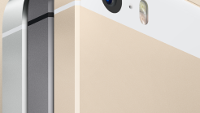U.S. consumers spent $5 billion in 2013 to upgrade their Apple iPhones

According to a published report released on Sunday, Americans spent $5 billion in 2013 to upgrade their iPhones. And for many of those who spent the cash, the result was a handset not much improved over the model that they previously owned. The average iPhone upgrade costs $151 every two years, according to no less a source than the Wall Street Journal. From that figure, the paper computes the amount spent on iPhone upgrades each year in the U.S. to be $5.4 billion.
Every year, Americans dig deep into their pockets and shell out $11 billion to upgrade their smartphone. The percentage that upgrade each year is 23%, which explains why the top four U.S. carriers felt compelled to finally offer quicker upgrades with new plans that came to market this year. With some plans, you can even upgrade twice in a year.
Part of the reason why there is such a rush to upgrade to the next iPhone has to do with the ability of iPhone owners to dump their current phone in what has become a strong secondary market. Sites like Gazelle.com are paying pretty good prices, rewarding those who kept their phone in great condition. A 16GB Apple iPhone 4s in flawless condition, will fetch $110 on Gazelle, An Apple iPhone 5 in the same condition will bring you $280. Gazelle says that iPhone trade-ins are up 74% this year, while trades for Samsung branded models are up 114%.
Of course, none of this means anything if Apple didn't add a few things here and there to make you desire the new model. This year, the Apple iPhone 5s added a faster, more powerful A7 processor, improved the rear-facing camera and increased the capacity of the battery to name a few things. But the most important change was the addition of the TouchID fingerprint scanner, embedded in the home button. Apple's marketing makes iPhone users feel like that "must have" the latest model with the latest features. The same tricks were used by Apple when the Apple iPhone 4s launched with Siri.
According to a recent study by Asymco's Horace Dediu, the growth in Apple iPhone penetration in the U.S. matches the growth of the overall smartphone market. Dediu sees the iPhone peaking in the states during February 2017 when he predicts that the phone will have a 68% market share and 90% penetration which means that by then, 180 million Americans will own Apple's iconic smartphone. At that point, just about everyone who wants an iPhone will own the device. And that will mean that Apple will need to rely on those iPhone owners upgrading to the next model to keep sales growing.
The scary news for Apple is that similar to what was seen with BlackBerry, when such a seismic shift does takes place, those former customers usually never return.
source: MarketWatch
According to a recent study by Asymco's Horace Dediu, the growth in Apple iPhone penetration in the U.S. matches the growth of the overall smartphone market. Dediu sees the iPhone peaking in the states during February 2017 when he predicts that the phone will have a 68% market share and 90% penetration which means that by then, 180 million Americans will own Apple's iconic smartphone. At that point, just about everyone who wants an iPhone will own the device. And that will mean that Apple will need to rely on those iPhone owners upgrading to the next model to keep sales growing.
As long as Apple continues to make new iterations of the Apple iPhone just a little better, with some new features, Americans will continue to spend to buy the new model. And this is why Apple's board was on CEO Tim Cook's back earlier this year about innovation. Once Apple stops offering something new, even something minor, these upgrades go away and more iPhone users will decide to give this Android thing that they've been hearing about, a try. And once the Apple iPhone penetration reaches 90%, the whole process starts working in reverse, at a speed faster than when sales were growing. This is exactly what has happened to BlackBerry from 2008 to present. There was no reason to upgrade to new BlackBerry models, and in fact, Apple was giving Berry users a good reason to switch.
source: MarketWatch
Follow us on Google News










![A new Android bug is making it impossible to install new apps. Are you affected? [UPDATE]](https://m-cdn.phonearena.com/images/article/176703-wide-two_350/A-new-Android-bug-is-making-it-impossible-to-install-new-apps.-Are-you-affected-UPDATE.webp)

Things that are NOT allowed:
To help keep our community safe and free from spam, we apply temporary limits to newly created accounts: